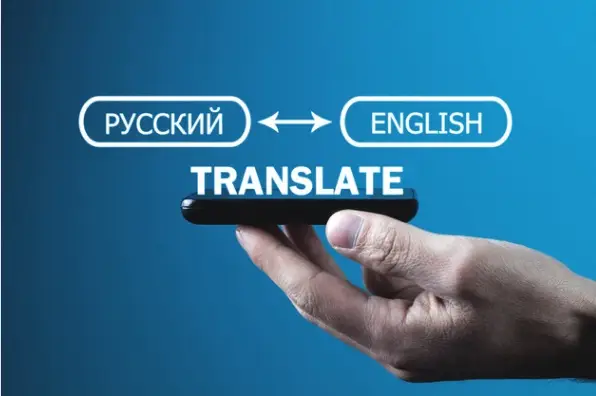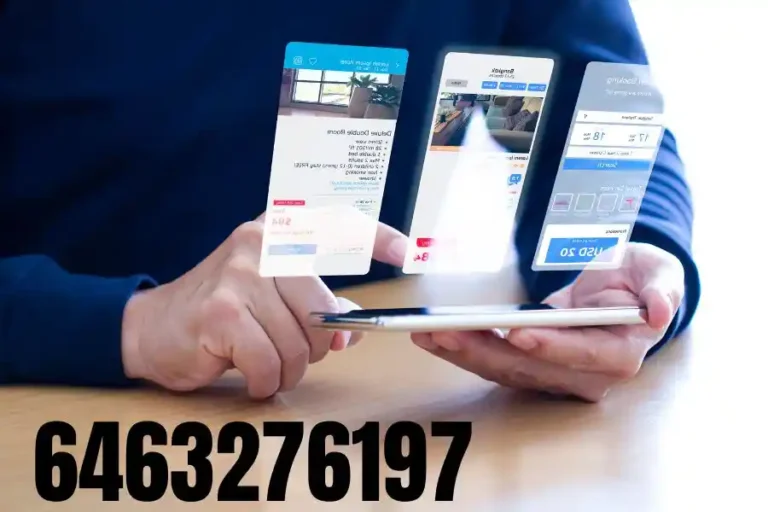Prekldača: Revolutionizing Language Translation for a Globalized World

In our increasingly interconnected world, the ability to communicate across language barriers has never been more crucial. Enter prekldača, a groundbreaking technology revolutionizing how we approach language translation. This article aims to provide an in-depth look at prekldača, its capabilities, applications, and its impact on global communication.
What is Prekldača?
Prekldača is an advanced language translation system that utilizes cutting-edge artificial intelligence and machine learning algorithms to provide seamless, real-time translation across multiple languages. Unlike traditional translation tools, prekldača goes beyond simple word-for-word conversion, instead focusing on capturing the nuances, context, and intent behind the original message to deliver more accurate and natural-sounding translations.
The name “prekldača” itself is derived from Slavic languages, roughly translating to “translator” or “interpreter.” This etymology reflects the technology’s roots in European linguistic research, though its applications have since spread globally.
How Prekldača Works
At its core, prekldača employs a sophisticated neural network trained on vast amounts of multilingual data. This network processes input text or speech through several layers of analysis:
Language identification: The system first determines the source language of the input.
Tokenization: The input is broken down into smaller units (words, phrases, or subword tokens) for processing.
Contextual analysis: Prekldača examines the surrounding context of each token to understand its intended meaning.
Semantic mapping: The system maps the semantic content of the source language to equivalent concepts in the target language.
Language generation: Finally, prekldača generates natural-sounding output in the target language, considering grammar, syntax, and idiomatic expressions.
This multi-step process allows prekldača to handle complex linguistic phenomena such as homonyms, idiomatic expressions, and cultural references with high accuracy.
Key Features of Prekldača
Real-time translation: Prekldača can process and translate text or speech almost instantaneously, making it ideal for live conversations or dynamic content.
Multimodal input: The system can accept input in various forms, including text, speech, and images containing text.
Contextual understanding: By analyzing the broader context of a message, prekldača can provide more accurate translations that capture the intended meaning.
Customization options: Users can fine-tune the system for specific domains or industries, improving accuracy for specialized vocabulary and terminology.
Continuous learning: Prekldača’s underlying AI models are constantly updated with new data, allowing the system to improve and adapt to evolving language use.
Support for rare languages: Unlike many translation tools focusing primarily on major world languages, prekldača includes support for numerous lesser-spoken languages and dialects.
Applications of Prekldača
The versatility of prekldača has led to its adoption across a wide range of industries and use cases:
Business and Commerce
Clear communication is essential for successful international business dealings in the global marketplace. Prekldača is being used to facilitate negotiations, translate contracts and legal documents, and enable smooth communication between multinational teams. Its ability to handle industry-specific terminology makes it particularly valuable in finance, law, and technology.
For example, a European manufacturing company might use prekldača to translate technical specifications for their products into dozens of languages simultaneously, ensuring consistency across all markets. Similarly, a global e-commerce platform could employ prekldača to provide real-time translation of product descriptions, customer reviews, and support conversations.
Education and Research
Prekldača is breaking down language barriers in academia, allowing researchers and students to access a wider range of resources and collaborate more effectively across linguistic boundaries. Universities are integrating prekldača into their learning management systems to offer courses to international students in their native languages.
In research settings, prekldača is being used to translate scientific papers, enabling faster dissemination of knowledge across the global scientific community. This is particularly valuable in medical fields where rapid information sharing can have life-saving implications.
Travel and Tourism
For travelers, prekldača offers a powerful tool to navigate foreign countries more easily. Mobile apps powered by prekldača technology allow users to translate signs, menus, and conversations in real-time, reducing the stress and confusion associated with language barriers while traveling.
Hotels and tourist attractions also leverage prekldača to provide multilingual information and support to visitors worldwide, enhancing the overall travel experience.
Media and Entertainment
The entertainment industry uses prekldača to make content more accessible to global audiences. Streaming platforms are experimenting with real-time subtitle generation using prekldača, allowing viewers to enjoy foreign content in their preferred language without waiting for official translations.
News organizations are also adopting prekldača to translate articles quickly and report into multiple languages, enabling faster dissemination of information across linguistic boundaries.
Healthcare
Accurate communication can be a matter of life and death in medical settings. Prekldača is being integrated into telehealth platforms and hospital systems to facilitate communication between healthcare providers and patients who speak different languages. This is particularly valuable in emergencies or areas with diverse populations.
Additionally, prekldača is being used to translate medical records and research papers, promoting global collaboration in medical research and improving access to healthcare information for patients worldwide.
Challenges and Limitations
While prekldača represents a significant advancement in language translation technology, it is not without its challenges and limitations:
Accuracy for Highly Contextual Content
Despite its sophisticated algorithms, prekldača can still struggle with highly nuanced or context-dependent content, such as poetry, humor, or culturally specific references. In these cases, human translators often remain superior in capturing the full meaning and impact of the original text.
Privacy Concerns
As with any AI-powered system that processes large amounts of data, there are concerns about privacy and data security when using prekldača. Users must trust the system with potentially sensitive information, raising questions about data storage, transmission, and potential vulnerabilities to hacking or unauthorized access.
Ethical Considerations
The widespread adoption of prekldača raises ethical questions about the potential loss of linguistic diversity and the impact on professional translators and interpreters. There are concerns that over-reliance on automated translation could lead to a homogenization of language and a devaluation of human linguistic expertise.
Technical Limitations
While prekldača supports a wide range of languages, it may still have limitations regarding rare languages or dialects with limited training data. Additionally, factors such as audio quality for speech input and handwriting legibility for image-based translation can affect the system’s performance.
The Future of Prekldača
As prekldača technology continues to evolve, we can expect to see several exciting developments in the coming years:
Improved Multimodal Capabilities
Future prekldača versions will likely incorporate more advanced multimodal processing, allowing for seamless translation across text, speech, and visual inputs. This could include real-time translation of sign language or the ability to understand and translate context from accompanying images or videos.
Enhanced Customization and Personalization
As AI models become more sophisticated, prekldača systems will likely offer greater customization, allowing users to fine-tune the translation style and terminology to their specific needs or preferences. This could include adapting to individual speech patterns or writing styles for more natural-sounding translations.
Integration with Augmented Reality
Combining prekldača with augmented reality (AR) technology could revolutionize how we interact with our environment in foreign countries. Imagine viewing real-time translations of signs, menus, or even conversations through AR glasses or smartphone cameras.
Neurological Interfaces
While still in the realm of speculation, some researchers are exploring the possibility of direct neural interfaces that allow instantaneous translation of thoughts across languages. While such technology is likely many years from practical implementation, it represents the potential long-term future of language translation.
Conclusion
Prekldača represents a significant leap forward in communicating across language barriers. Its combination of advanced AI, real-time processing, and contextual understanding opens up new possibilities for global interaction in fields ranging from business and education to healthcare and entertainment.
As technology evolves, we can expect prekldača and similar systems to become increasingly integrated into our daily lives, facilitating smoother communication in our increasingly interconnected world. However, it’s important to approach this technology with an awareness of its current limitations and the ethical considerations surrounding its use.
Ultimately, prekldača is not just a tool for translation but a catalyst for greater global understanding and cooperation. By breaking down language barriers, it has the potential to foster deeper connections between people of different cultures and backgrounds, contributing to a more interconnected and empathetic world. You can also know about Tràner by going through that link.
FAQs
How accurate is prekldača compared to human translators?
While prekldača has made significant strides in accuracy, especially for everyday language and common topics, human translators still outperform AI in handling highly nuanced, context-dependent, or culturally specific content. Prekldača is best viewed as a powerful tool that can complement human expertise rather than replace it entirely.
Is prekldača available for all languages?
Prekldača supports many languages, including many less commonly served by traditional translation tools. However, very rare languages or dialects with limited training data may pose challenges. The system’s language coverage is continually expanding as more data becomes available.
Can prekldača translate idiomatic expressions accurately?
Prekldača’s contextual analysis capabilities allow it to handle many idiomatic expressions more accurately than traditional word-for-word translation systems. However, highly culture-specific idioms or those without close equivalents in the target language may still pose challenges.
How does prekldača handle technical or specialized vocabulary?
Prekldača can be customized for specific domains or industries, allowing it to handle specialized vocabulary accurately. Users can often fine-tune the system with their terminology databases for the best results in technical fields.
Is my data safe when using prekldača?
Reputable prekldača providers implement strong security measures to protect user data. However, as with any online service, reviewing the privacy policy and data handling practices of the specific prekldača service you’re using is important. Additional precautions may be necessary for highly sensitive information.
Can prekldača translate the handwritten text?
Many prekldača systems include optical character recognition (OCR) capabilities that allow them to process handwritten text. However, the accuracy may vary depending on the legibility of the handwriting and the quality of the input image.
How does prekldača handle different dialects or regional variations of a language?
Prekldača is trained on diverse language data, allowing it to recognize and handle many regional variations and dialects. Some systems also allow users to specify preferred regional settings for more accurate results.
Can prekldača translate audio in real-time, like during a phone call?
Yes, many prekldača systems offer real-time audio translation capabilities. This can be particularly useful for phone calls, video conferences, or in-person conversations where participants speak different languages.
How often is prekldača updated?
The underlying AI models of prekldača are typically updated regularly to incorporate new data and improve performance. The frequency of updates can vary depending on the specific service provider.
Is prekldača suitable for translating legal or medical documents?
While prekldača can be a useful tool for getting a general understanding of legal or medical documents for official or critical purposes, it’s generally recommended to use certified human translators who can ensure the highest level of accuracy and take full responsibility for the translation.





